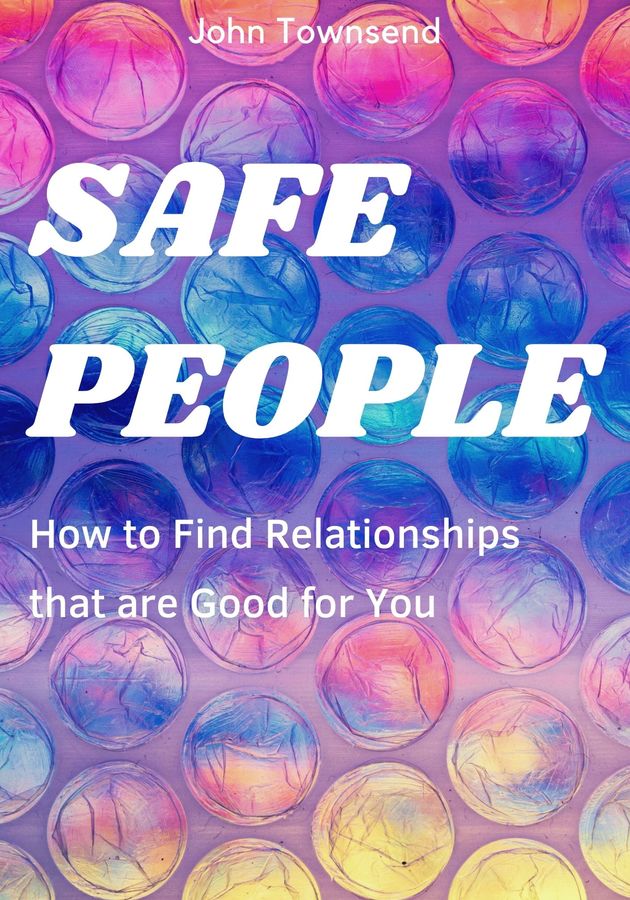Are you open to at least thinking about a different approach to discipline? One that helps you achieve your immediate goals of getting your kids to do the right thing in the moment, as well as your longer-range goals of helping them become good people who are happy, successful, kind, responsible, and even self-disciplined?
It’s not easy, especially if you realize that we live in a world full of distractions, which evidently makes the process of nurturing your child a daunting task. But same as any other form of mastery, parenting can be perceived as an art. And Daniel J. Siegel and Tina Payne Bryson are acclaimed artists. With them, we explore the ultimate child-raising challenge: discipline.
Let’s dive right in!
How to rethink discipline
Evidently, the word “punishment” shouldn’t be synonymous with “discipline.” Paradoxically, that is precisely the reason why Siegel and Bryson chose it: they wanted to reframe the whole discussion, to reclaim the word “discipline” along with its original meaning, to inspire caregivers to start thinking of discipline as “one of the most loving and nurturing things” they can do for kids.
And the first lesson is this: there’s no such thing as one-size-fits-all discipline. “Really?” you ask, “What about spanking and time-outs? They have been around since the dawn of time, and have stood the test of time!” Well, the reason why spanking and time-outs have stood the test of time is pretty much synonymous with the problem: these are autopilot reactions.
Instead of immediately reacting – lecturing, spanking, timing-out – you could just take a moment and ask yourself three simple questions:
- Why did my child act this way?
- What lesson do I want to teach my child at this moment?
- How can I best teach this lesson?
Since every child and situation is different, the answers will differ from case to case. But, after all, that is pretty much the point!
Progress from tantrums to tranquility: the power of connection
Science has taught us that our children’s brains are changing, changeable, and complex. In simplified terms, they consist of two sections: the “downstairs brain,” and the “upstairs brain.” The downstairs brain is the reptilian one; the upstairs brain is the human one.
Now, most parenting techniques are reactive. They are merely reactions to the child’s actions, and engage the downstairs brain of the child. As a result, they encourage the child to counteract. There’s a better way! It’s called proactive parenting, and it consists of two steps: connecting and redirecting. Now, why connecting? For three reasons:
- Connection moves a child from reactivity to receptivity
- Connection builds the brain
- Connection deepens the relationship with a child
How Connection Principles work
Connection Principle #1: Turn down the shark music
Remember the sound of “Jaws”? Play it over a video depicting a man walking through a beautiful forest to the ocean, and the peaceful scene would suddenly become more than threatening!
Well, that’s exactly how phrases such as “Go to your room!”, “Because I said so!” or “Here we go again!” sound to your child. How about switching to something like: “You seem disappointed about this grade”?
Connection Principle #2: Chase the why
“One of the worst by-products of shark music,” write Siegel and Bryson, “is the parental tendency to make assumptions about what we perceive to be obvious.”
Sherlock Holmes would be the first to differ: “It is a capital mistake to theorize before one has data,” he famously says. “Insensibly one begins to twist facts to suit theories, instead of theories to suit facts.”
So, instead of blaming and criticizing (“What did you do this time?”), you should instead consider chasing the deep and profound why (“What happened here?”, “I wonder what you two were aiming for this time?”)
Connection Principle #3: Think about the how
The third connection principle focuses on the way you actually interact with your children. It challenges you to consider the way you talk to your kids when they’re having trouble managing themselves or making good decisions.
What you say to your kids is, of course, important. But just as important, if not more important, is how you say it. In other words, even orders like “Get in your car seat!”, if told with a Jim Carrey voice and a silly face, can sound wacky and alluring!
Connection Strategy #1: Communicate comfort
Communicating comfort is the basic (and, in most cases, the foremost) connection strategy. It is primarily non-verbal and, most powerfully, it is expressed through a loving touch.
Connection Strategy #2: Validate, validate, validate
When your child is sad for missing a playdate, you shouldn’t react the way that you’re automatically inclined to – by dismissing the importance of the event. On the contrary, in fact: you must validate it before moving on to other strategies. In other words, instead of saying, “What’s the big deal about missing a playdate?”, say, “I understand that you’re sad. You really wanted to go.”
Connection Strategy #3: Stop talking and listen
This one’s pretty much self-explanatory: talking often compounds the problem. Try to be quiet while your child speaks and just listen.
Connection Strategy #4: Reflect what you hear
Reflecting what you hear is similar to validating, but it differs in that you focus specifically on what your kids have actually told you.
Redirecting for today, and for tomorrow
Now that you’ve learned how to connect with your child, it is time to learn how to redirect their behavior in the desired direction.
Siegel and Bryson go over the redirection basics, helping readers remember one definition of discipline (to teach), two key principles (wait until your child is ready, and be consistent but not rigid), and three desired outcomes (insight, empathy, and repair).
One Definition
“No-Drama Discipline” is all about teaching, and that is because all discipline should be about teaching, and not about consequences.
So, instead of immediately giving consequences: (“I can’t believe you’ve stolen my cigarettes! No going out for a month!”), you should initiate a conversation: (“Can you tell me something more about my cigarettes?”)
It’s only in the second case that you can hope that you and your child will learn something. In the first case, things might just get worse, because “downstairs-brain reactions” breed “downstairs-brain reactions.” It’s as simple as that.
Two Principles
There are two main principles when redirecting your kids to encourage cooperation and make life easier for both you and your children.
These principles are:
- Wait until your child is ready; and
- Be consistent, but not rigid.
In essence, these principles mean that you shouldn’t rush anything, and that instead of rigidly commanding and demanding: (“You can’t talk to me that way! You’re in a lot of trouble now!”), you should give your child practice doing the right thing: (“Let’s have a do-over. I know you can say that again in a more respectful way.”)
Three Mindsight Outcomes
If you’ve read Dan Siegel’s “Mindsight” and “The Whole-Brain Child,” you’re already familiar with this simple equation: insight + empathy = mindsight. In other words, “When we ask our children to consider their own feelings (using personal insight) while also imagining how someone else might experience a particular situation (using empathy), we are helping them develop mindsight.”
You can learn more about mindsight if you read the summaries linked above, but, explained simply, “Mindsight is the ability to see our own mind, as well as the mind of another. It allows us to develop meaningful relationships while also maintaining a healthy and independent sense of self.”
And that’s what you’re aiming for with your kid, aren’t you?
Addressing behavior: as simple as R-E-D-I-R-E-C-T
Chapter 6 “concentrates on specific redirection strategies you can use for achieving the immediate goal of eliciting cooperation in the moment, and for teaching kids about personal insight, relational empathy, and taking steps toward making good choices.”
Siegel and Bryson have made an effort to organize these strategies in an acronym that spells out their goal: R-E-D-I-R-E-C-T.
#1. Reduce words
The last thing a child needs is a long lecture about their mistakes; so, resist the urge to overtalk.
#2. Embrace emotions
“We want to say yes to our kids’ desires,” write Siegel and Bryson, “even when we need to say no to their behavior and redirect them toward appropriate action.”
Don’t squelch your child’s emotions by saying things like, “I know you don’t hate your brother.” Instead, say something like, “OK, you feel like you hate your brother, but let’s talk about other ways to express this.”
#3. Describe, don’t preach
What kids need is for their parents to redirect them, “helping them recognize the bad decisions they’re making and what leads up to those decisions, so they can correct themselves and change whatever needs to be changed.”
In other words, instead of preaching along the lines of: “If everyone put the shoes at the front door, it would be a mess. Put your shoes away!”, use a simple description that says even more under the surface: “I see shoes at the front door.”
#4. Involve your child in the discipline
“When children are involved in the process of discipline,” say Siegel and Bryson, “they feel more respected, they buy into what the parents are promoting, and they are therefore more apt to cooperate and even help come up with solutions to the problems that created the need for discipline in the first place.”
The lesson: parents and children should work as a team to figure out how best to address disciplinary situations. This approach triggers a dialogue, which doesn’t start with “You don’t know what you’re doing and saying,” but with a question: “What could you do next time you’re mad?”
#5. Reframe a “no” into a “conditional yes”
Most parents use a “no,” even though a “conditional yes” is also a possibility and actually helps. Transform the “No, we can’t stay” into “Of course you can have more time with Nana,” with a simple time-conditioned question: “How about this weekend?”
#6. Emphasize the positive
We all know how to scold negative behavior, but very few of us really encourage positive traits in our children.
And it’s fairly easy to do that: just catch your kid behaving well, and emphasize their good behavior to create synaptic networks inside their brain.
#7. Creatively approach the situation
Remember: your kids are kids. In other words, they like games more than almost anything in the world. So, start masking the orders (i.e., the things they must do) into games (i.e., playful, creative ways to spend time). Need an idea?
How about, instead of saying, “Get in your car seat right now!”, you say something like: “Please, please don’t sit in that car seat because Jimmy Jimmerino is already sitting there!” Of course, Jimmy Jimmerino is your imaginary friend (who, we feel, will make quite a few appearances along the way).
#8. Teach mindsight tools
The final redirection strategy, say Siegel and Bryson, is perhaps the most revolutionary. Why? Because it involves you teaching your children the things they taught you throughout this book.
Twenty discipline mistakes even great parents make
Last but not least, let’s dive into the most common mistakes most parents make, and how you can avoid them so that you start heading down the low parenting road:
- Our discipline becomes consequence-based instead of teaching-based.
- We think that if we’re disciplining, we can’t be warm and nurturing.
- We confuse consistency with rigidity.
- We talk too much.
- We focus too much on the behavior and not enough on the why behind the behavior.
- We forget to focus on how we say what we say.
- We communicate that our kids shouldn’t experience big or negative feelings.
- We overreact, so our kids focus on our overreaction, not their own actions.
- We don’t repair.
- We lay down the law in an emotional, reactive moment, then realize we’ve overreacted.
- We forget that our children may sometimes need our help making good choices or calming themselves down.
- We consider an audience when disciplining.
- We get trapped in power struggles.
- We discipline in response to our habits and feelings instead of responding to our individual child in a particular moment.
- We embarrass our kids by correcting them in front of others.
- We assume the worst before letting our kids explain.
- We dismiss our kids’ experience.
- We expect too much.
- We let “experts” trump our own instincts.
- We’re too hard on ourselves.
Final Notes
“No-Drama Discipline” may not be a long book, but don’t let this fool you: it introduces a new approach to parenting and disciplining children, which, for starters, gives back the original meaning of the word “discipline.”
Helpful and well-structured, this is one of the books you should read and reread if you want to master the art of parenting.
12min Tip
The next time your kid throws a tantrum, try to look at things from their perspective, instead of getting into reactive mode.




























